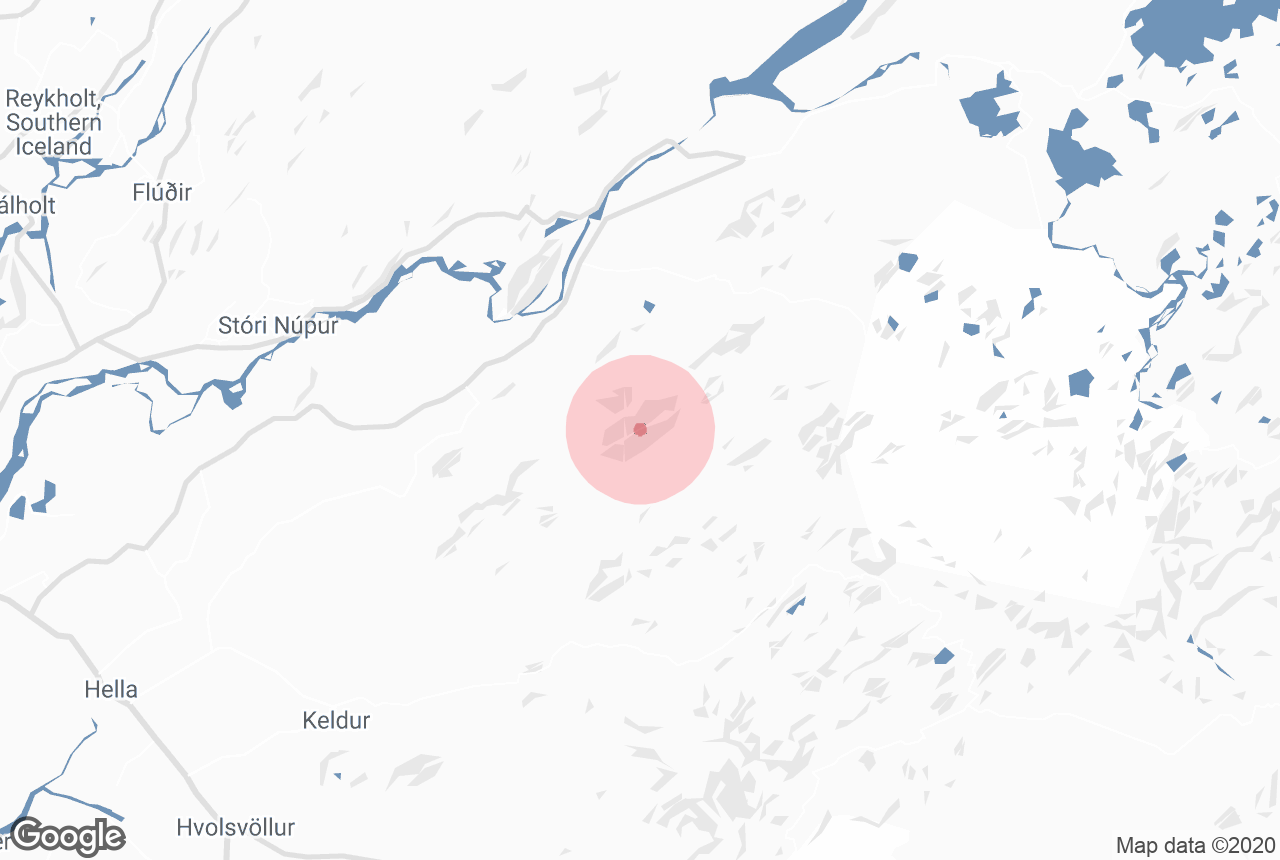
The most “renowned or infamous” volcano of Iceland, Hekla, is situated on a 25 miles long volcanic fissure. The volcano itself is about 3 miles long and about 5000 feet high. It is estimated to be 6000-7000 years old and the life expectancy of such central volcanoes is about 100.000 years according to geologists. Presumably, the number of Hekla’s major eruptions is close to 20 during historic times and minor eruptions in its vicinity about 25. The first documented eruption in 1104, devastated the inhabited valley Thjorsardalur and other areas further inland. One of the vastest eruptions in the year 1300, split the mountain apart. The booms were heard in the northern part of the country and the plume and ashes created such darkness there, that no one dared to go fishing. Farms collapsed during the earthquakes and the following famine demanded many human lives.
This eruption lasted a whole year. In 1510, Hekla emitted its products over such great distances, that a heavy stone caused a fatal casualty 28 miles away. During a major eruption in 1693, 14 craters were active simultaneously. This eruption devastated 50 farms for a while. Still another major eruption in 1766, which lasted two years with intervals, showed 18 craters active at the same time. The eruption of 1845 lasted 7 months. In 1947, the eruption lasted 13 months uninterrupted. At that time the plume reached the height of 20 miles. About one km³ of tephra, which covered about 40 km² of land, was produced. One fatal casualty among the scientists on the spot occurred. In 1970, a minor eruption devastated large grazings in the central highlands and fluoride poisoning was experienced.
Minor eruptions
Other minor eruptions took place in 1980, 1981, 1991 and the most recent one started at 18,15 on February 26th 2000. The 7 km long volcanic fissure was active in the beginning and the lava flows ran down the eastern slopes. Within one hour of the eruption they had reached the surrounding lowland areas and the lava production was considered rather large in volume. This eruption seemed to behave similarly to the 1991 eruption in the beginning. The next day the southeast part of the fissure remained active and the lava continued flowing, a branch of it to the southwest. Lava was flowing in a wide stream down the northwest shoulder in the direction of the Skjolkviar (1970 eruption). The plume was carried to the north the first day and the second day to the south-southeast across the Myrdals Glacier to the sea and the power of the eruption dropped to 90%. It reached an altitude of about 13 km in the beginning. On the third day, the eruption still diminished to 5% of its initial power and the plume stretched towards southeast. Fine ash powder was spotted on Svalbard. Officially the eruption ended on March 8th. Hekla is among the best known volcanoes of the world.
Many Europeans believed that Hekla was one of two known entrances of Hell (+Stromboli). Many extraordinary and dreadful legends about the volcano existed and no one climbed it until 1750, when two naturalists ventured to the top. Up there, they could not find anything to substantiate the legend and since then, the mountain is frequented by all kinds of people. The easiest way up is from the north. On a fine day, the view from up there is simply unbelievable.








